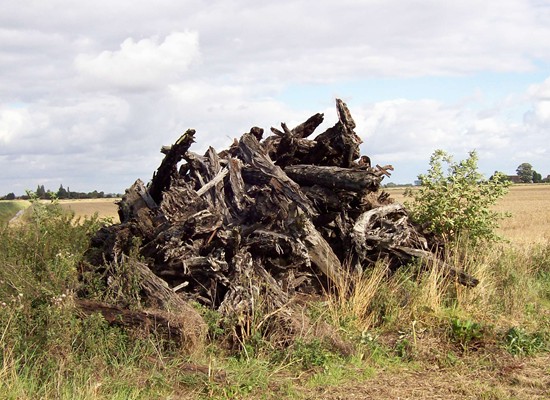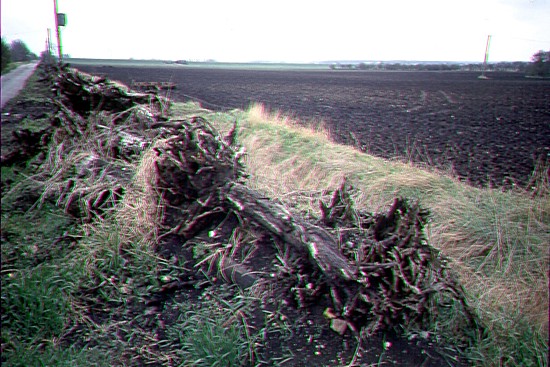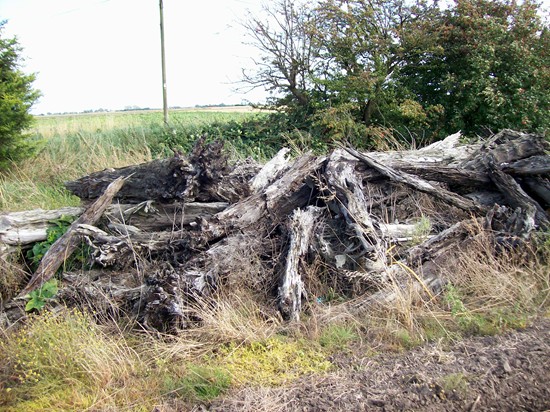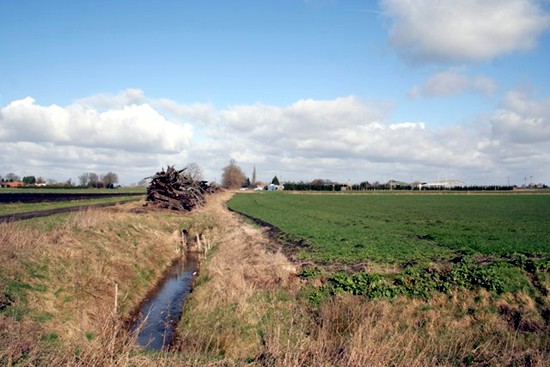|
Bog oaks

Anyone venturing off the main
roads around Bourne and into the narrow fenland lanes will encounter many
roadside piles of wooden logs, distorted in shape and discoloured
grey-black with age because they are indeed relics from the dim and
distant past.
These ancient timbers that have been preserved in wetlands such as the
fens around Bourne for several millenia have become known as bog oaks,
although they can also be yew or pine. Many massive specimens have been
turned up by the plough, some up to 40 feet long, and discarded at a safe
distance in order not to hamper future farming operations.
They are the remains of the forest that existed here after the Ice Ages,
the trees rotting and eventually falling into the peat soil and their
recovery provides a snapshot of ancient natural history.
The British Isles were once part of the continental land mass and the
rivers of eastern England tributaries of the River Rhine. Around 12,000
years ago, during the Ice Ages, the Arctic caps spread southwards as far
as the Thames valley and 2,000 years later, as the ice began to melt, low
lying areas of land flooded and created freshwater lakes and swamps.
For the next four thousand or so years, these Neolithic wetlands teemed
with plant life. Great oak forests evolved between the lakes and over time
fallen trees and vegetation composted down to form nutrient rich soils.
Some of the trees and branches fell into the lakes and ponds and sank to
the bottom and in these dark, airless conditions the timbers were
preserved from decay by the acidic and anaerobic bog for hundreds and even
thousands of years. The wood is usually stained brown by tannins dissolved
in the acidic water and bog wood represents the early stages in the
fossilisation of wood, eventually forming lignite and coal over a period
of many millions of years.
From time to time, the preserved timbers reach the earth's surface like
spirits from the past to remind us of what was once here. Although these
fossilised trees are known by the local name of bog oaks they can be any
species growing naturally near or in bogs including yew, pine and swamp
cypress. They are the legacy of this wet low lying land frequently
revealed as farmers plough deeper each year and throwing up huge sections
of preserved tree trunks in these fertile acres, so large that in past
times a special device was attached to the plough to release the horse
whenever the blade struck one and some were so large that several horses
were needed to pull them from the ground.
Many can still be seen in fen areas where they have been hauled clear of
the field and abandoned on the grass verge at the roadside and during the
19th century, these finds were no numerous that farmers cut them up and
used the wood to build fences and even today, many people collect sections
to decorate their rockeries and as garden ornaments.
The ancient forests that could be found in these parts were home to many
species of wild animals whose remains have also been found such as bones,
horns and antlers and particularly the teeth of mammoths, one so large
being recovered from the gravel pits around Deeping St James, near Bourne,
that it was used for many years by a family as a door stop.
REVISED JUNE 2013
|
MORE BOG OAKS |
|
 |
|
Bog oaks abandoned by the roadside after being turned up by the
plough in the
North Fen at Bourne in 1992 (above) and more piles near
Dyke village (below).
|
|
 |
 |
 |
|
More bog oaks can be found at the roadside in the South Fen at Bourne
(above and below). |
 |

Go to:
Main Index Villages
Index
|



